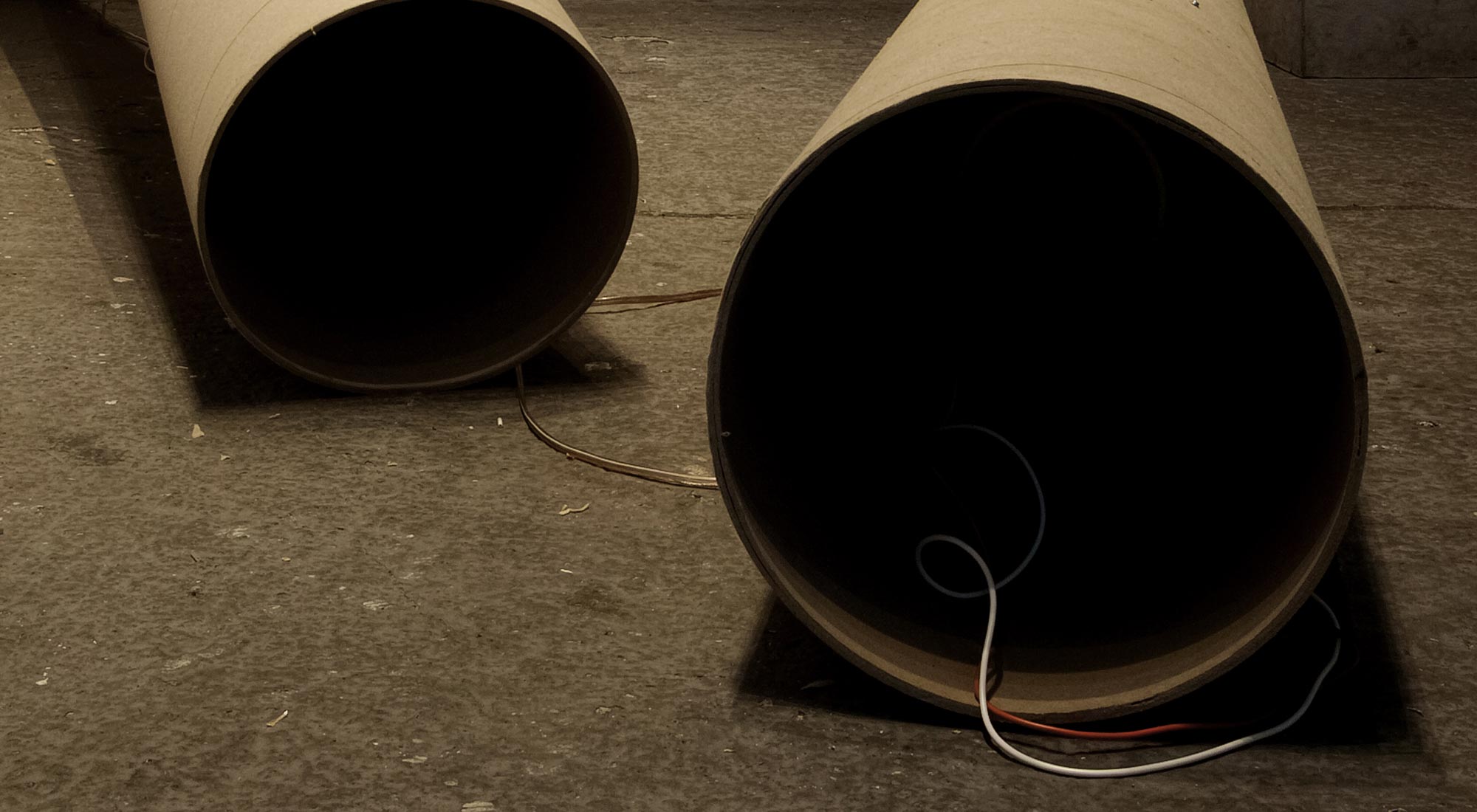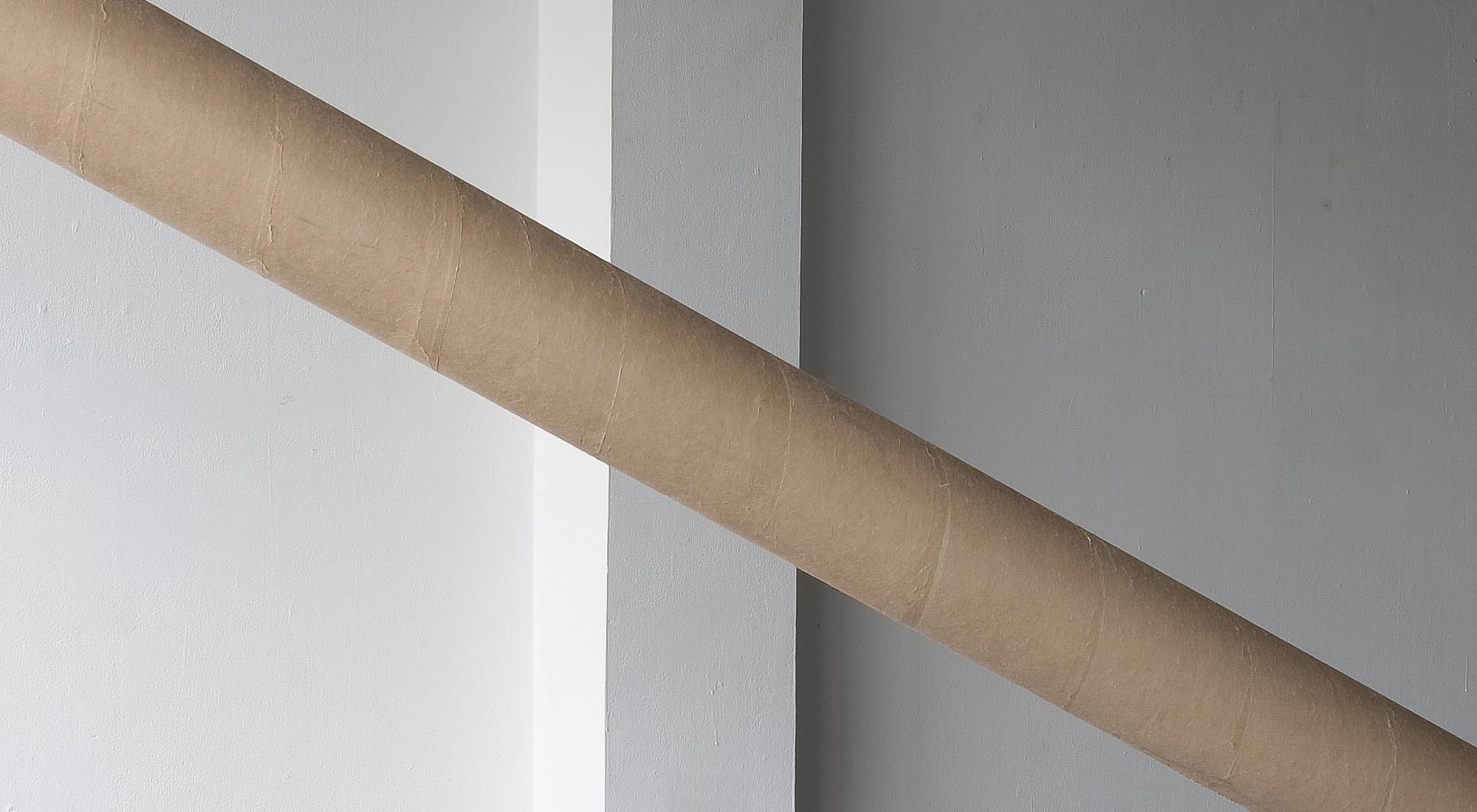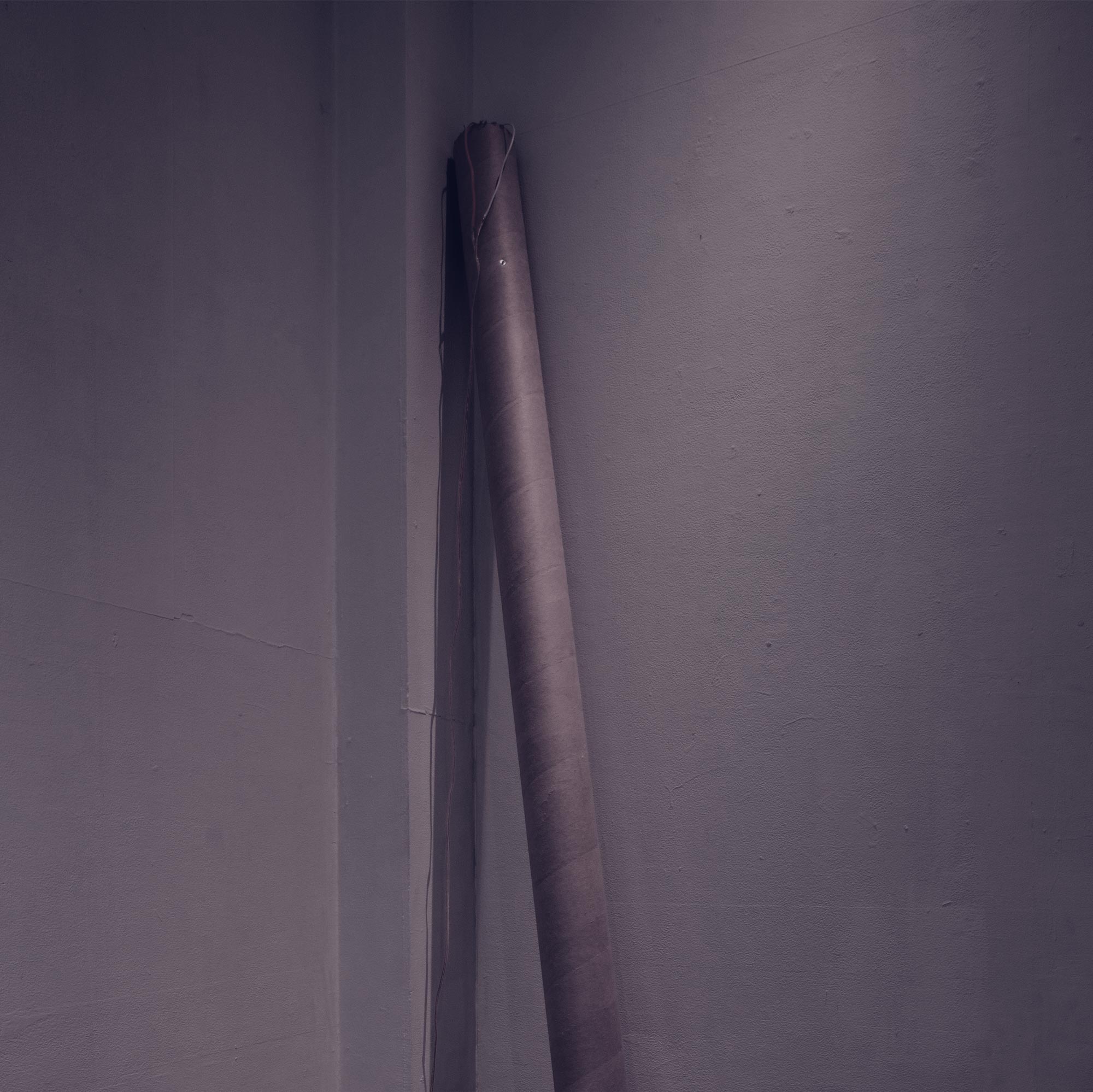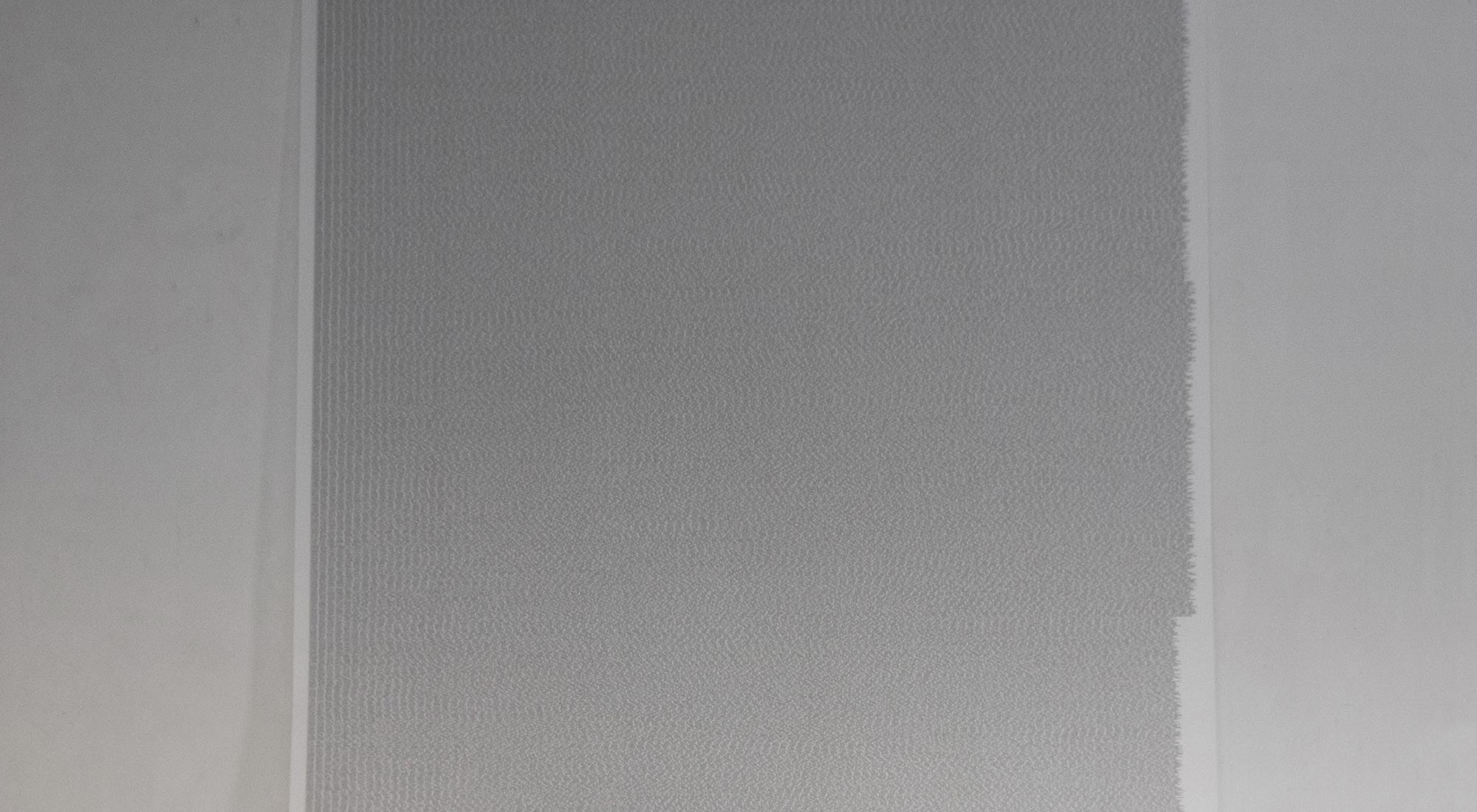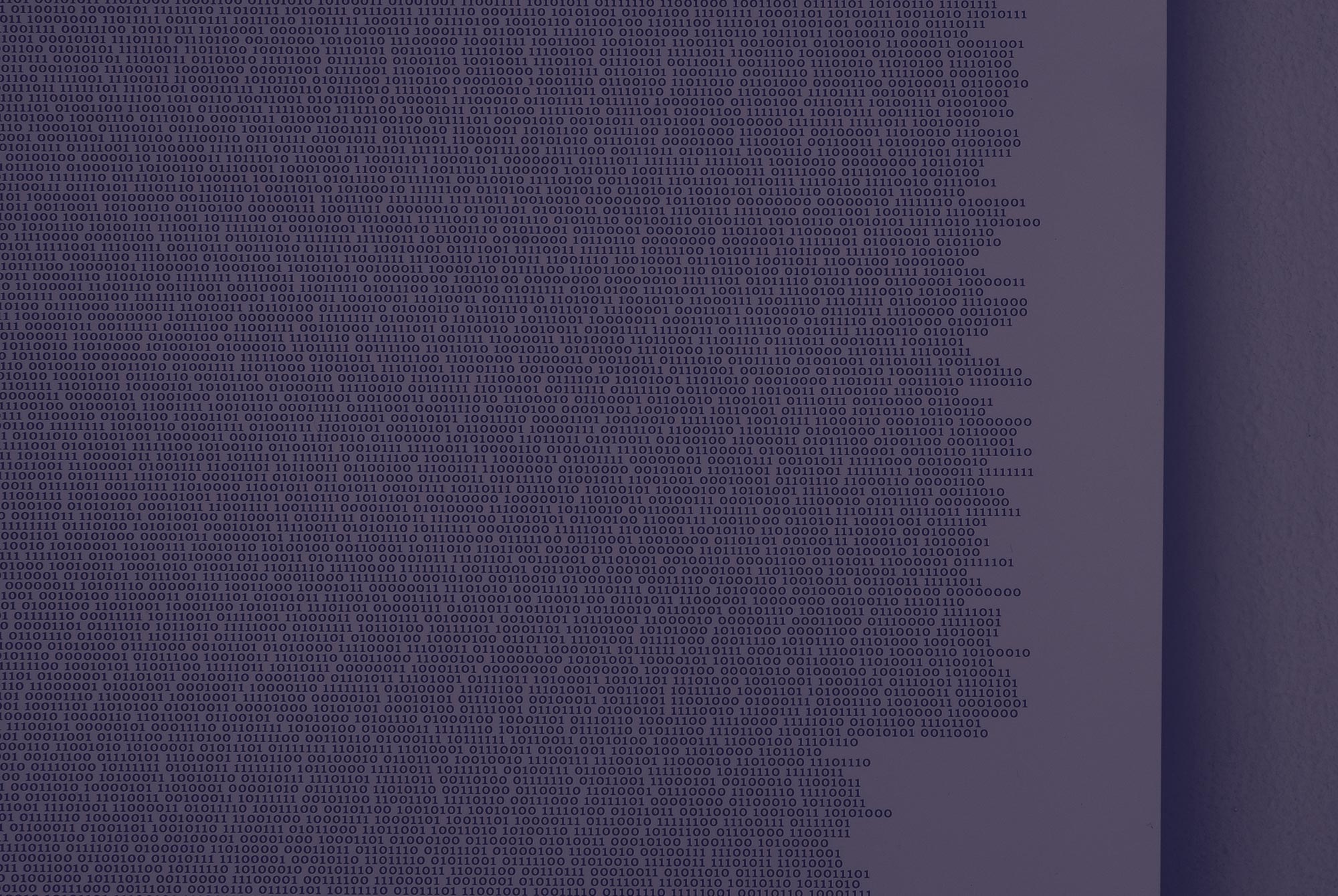町野三佐紀について カトウチカ
町野はここ何年か、展示室内の壁全体に加工した波の映像を投影して空間を作って来た。その空間に入り込んだ鑑賞者は、町野の作品空間の内部で、自身の外側に起きている現象を見つつ、今度は自身の内面を意識するようになる。それは町野の体験を追体験することでもある。その映像インスタレーションは、今までいろいろな空間で幾度も展示されてきた。
その後、町野は2014年あたりから意識的にその手法を止め、彼女のテーマ、「海」について、もっと「音」や「物」を通して思考し、新たな実験をはじめる。空間からは全体に投影されていた例の波の映像が無くなり、音を「体感」するための椅子や、表面をこすられた楽譜などの「物」が現れる。
今回のヒグレでは、物から用途や具体性がなくなり、スピーカーとして使われる抽象的な形態のヴォイド管のみが、何本か無造作に置かれている。横たわる人の身体のようでもある。そこから加工された低い音の響き(元は波の音)が聞こえて来る。町野によって加工され、彼女の記憶に近づけられた海の音が空間に低く満ちている。ヴォイド管とそれが発する音によって二階に導かれると、0と1の数字を延々と記述した大きなドローイング一枚が壁に、そして、ヴォイド管が一本、空中に斜めに置かれている。
町野は、ヒグレの空間のとりとめのない表面と広さに、終始とまどっているようにも思われた。だが、常に映していた映像の表面を、一度は自身の手でひきはがしてみる必要があったのだと推測する。
次のUnknown VOIDの個展では、その経験が活かされ、大小二つのスペースでともに緊張感のある展示をしてみせた。古いモノクロの映画のワンシーンが引き延ばされ、加工され、繰り返される。美しい映像の肌理。同じ時間に捕われ続ける緊迫した表情の登場人物達は、ゆっくりと同じ動作で揺れ動く。町野の映像の中で、もとのドラマから切り離され、つかのま生き返る過去の無名の役者達。呆然とした眼差しは何を見ているのか。暗く小さな部屋の壁を覆う灰色のフェルトは、空間の大きさを見失わせ、人を不安にさせる。外の世界の光や音は完全に遮断されている。スペースを満たす加工された声は、元の意味を剥奪されている。永遠の牢獄のようにも思われる空間。
町野は、自身が内面に抱える世界をより鮮明に意識化し、現実の空間にしていく。鑑賞者は、外の光を求めて空間を出る時、おぼろげなもう一人のゴーストを発見して衝撃を受ける。それはガラスのドアに映り込んだ鑑賞者自身の姿なのだが。偶然の産物ではあるが、作品の一つの完成の瞬間であるように思われた。
On Misaki Machino Chika Kato
For several years up to around 2014, Misaki Machino created the space of her work through projecting the processed images of waves on the entire wall of an exhibition room. Thus when the viewers entered that space, they would be inside the space of her work, gazing at the phenomena that occurred outside of their own selves. But because of that setting, they would in time become conscious of their own selves. This could also be seen as reliving Machino’s experience. This video-installation series was exhibited many times and in many spaces.
From around 2014, Machino deliberately stopped using that style of installation, and began to focus on and experiment with “sounds” and “objects,” based on her leitmotif of “ocean.” Instead of using the said wave images in the entire space, she adopted “objects,” such as a chair for the viewer to “physically experience” sounds, and a sheet of music scraped to the point of being indecipherable.
For this exhibition at HIGURE 17-15cas, the objects in her works were deprived of their concrete forms and ordinary usages. On the first floor, she casually placed a number of cardboard pipes with abstract forms so that they could function as speakers. They also looked like bodies in lying positions. The low-pitched sounds heard from the pipes were originally the sounds of waves. Those sounds, which seemed to be heard in the lower part of the room, were processed so as to be close to the sounds in Machino’s memory. The pipes and their sounds guided the viewers to go up the stairs, where they found a large drawing on the wall, with an endless depiction of the numbers “0” and “1,” as well as a cardboard pipe installed in midair.
Machino seemed perplexed by the irregular spaces and surfaces of the walls throughout the exhibition period. But I surmised that this show was indispensable for her to break away from the wave images in her films that she had theretofore continuously created.
In her following solo exhibition for the Unknown VOID project, she was able to convey a sense of tension in both the large and small spaces at void+. In her film, a scene extracted from an old black-and-white movie was extended in time, via digital processing and repeating of the scene. The sense of texture in the film images was beautiful. The characters in the film, who had tense facial expressions, were caught inside that specific time, while also repeating the same slow, swaying motions. Those anonymous actors from the past were removed from the original story, and then revived for a short while inside Machino’s film. Their vacant looks also led one to wonder what they were gazing at. The gray felt fabric that covered the gallery walls inside the dark, small space made the viewers lose their sense of proportion, while also making them feel insecure. The room was completely cut off from the light and sounds of the external world. The voices that filled the entire space were processed by Machino so that they were deprived of their original meaning. The space made one feel like he/she was inside an eternal prison.
Machino’s aim was to become keenly conscious of her own inner world, and to visualize it inside an actual space. As the viewer exited the darkened space of void+ seeking out the external light, he/she might have been startled to discover the faint reflection of a ghost-like figure. This was merely his/her own figure that was reflected in the glass door. But this accidental occurrence allowed me to feel that that moment was the finale of that work.



